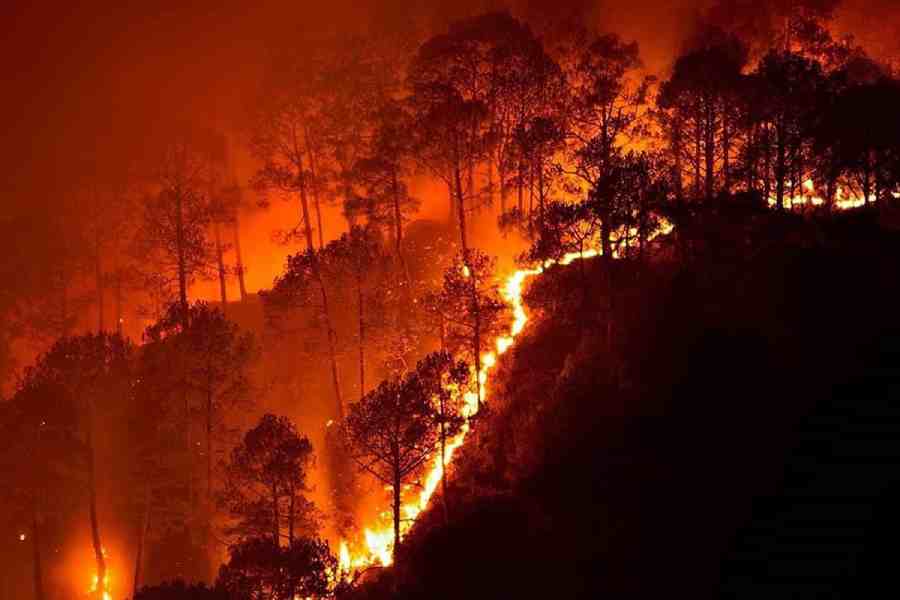According to a study by the University of Maryland, forest fires now result in three million more hectares of tree cover loss around the world annually than they did in 2001. In fact, 2023 witnessed the highest number of forest-fire-induced human casualties globally in the past three decades. The climate crisis, characterised by dry spells and extreme heat-wave-like conditions, along with human depredations like deforestation and unbridled urbanisation, has been the principal catalyst. Besides the immediate peril of mortalities to flora and fauna, blazing forests emit greenhouse gases contributing to global warming, reducing biodiversity, and causing alterations to local ecologies. India is not immune to this environmental hazard. The forest fires in Uttarakhand, which killed at least five people and gutted over 1,000 hectares of forested land, is a case in point. There have been 398 incidents of forest fires in the state since last November, all man-made. The India State of Forest Report 2019 found that nearly 4% of the country’s dwindling forest cover was “extremely prone” to such infernos.
Human culpability — complicity — often being a cause, states usually respond to the crisis with punitive measures by ignoring the deeper threats. Uttarakhand, for example, arrested four individuals and suspended 10 forest department employees in light of the recent fire while also initiating efforts to identify human activities that contributed to the crisis unwittingly. But there is a need to look beyond established protocols. Growing evidence suggests that the accumulation of pine needles on the forest floor — traditionally set ablaze during summer by the local communities for forest regeneration — has been aiding the spread of fires at a time of extreme climate events. But the state government's 'collect-pine-for-money' initiative remains the proverbial silver bullet: unsuitable to address a changing, layered challenge. Moreover, the gradual dilution of the van panchayats — these institutions not only accorded greater autonomy to forest communities but served as the eyes and ears on the ground — has hindered effective forest management. In this context, the Supreme Court's strict prodding to the Pushkar Singh Dhami-led state administration, emphasising the need to go beyond the scope of cloud seeding and “depending on rain god” for rainfall to douse the fire, underlines the wisdom of a rethink. Training forest-dwelling communities as first responders in fire management could be looked into while examining the prospect of adopting international best practices — the LIFE projects that aim to reduce forest fires in Europe can be a template — to Indian conditions.











